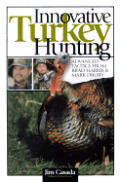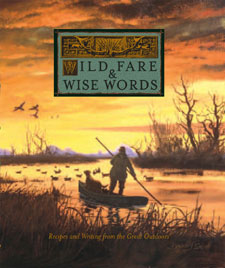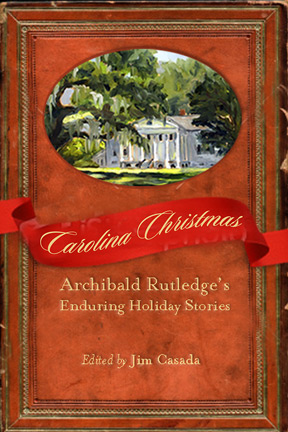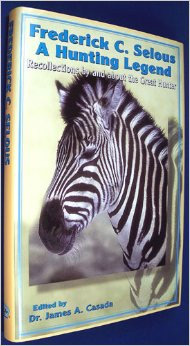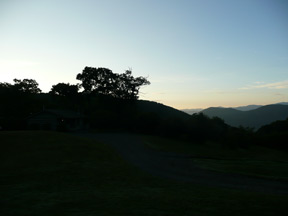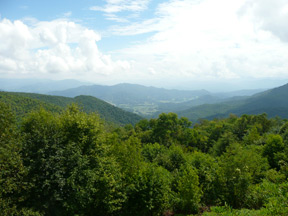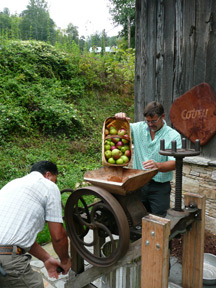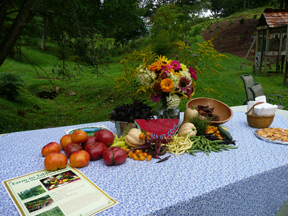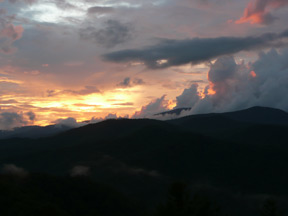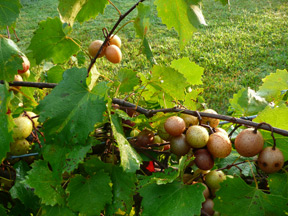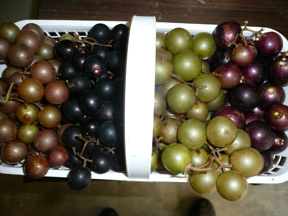September 2014 Newsletter
Click here to view this newsletter in a .pdf with a white background for easy printing. Sweet September This Month’s Book Specials It is unquestionably a bit early to start thinking about the Yuletide season, Christmas shopping, or plans to have every gift purchased by Thanksgiving. Also, I’ll readily acknowledge I am anything but an enthusiastic shopper and invariably my duties in that regard rely in considerable measure on my daughter and my wife. To be sure, I’ll usually accompany my daughter to the Thanksgiving weekend sales, knowing that she’ll tender good advice, know what will and won’t work (especially when it comes to clothing for my good missus), and that she doesn’t mind walking up and down crowded aisles. Still, I’m proud to say that I’ve actually purchased three gifts already, and since none of the intended recipients read my newsletter, thanks no doubt to hearing more than enough blather from yours truly in person, I don’t mind revealing what they are. All are books, one on wine for my son-in-law, who knows a great deal about wine and enjoys studying the subject, and two for my wife. Both of her books are cookbooks, and I don’t think a Christmas has passed in at least three decades when she hasn’t been the recipient of at least one such work. It’s not that she is so incapable in the kitchen that she couldn’t boil an egg without instructions; rather, she is highly skilled and always enjoys new recipes and new challenges. I’ve always thought books made fine Christmas presents. They are enduring, enjoyable, and in many cases educational. I still have the first book ever given to me, Zane Grey’s Spirit of the Border, and the same is true for the second one, a rebound copy of the first printing of Horace Kephart’s Our Southern Highlanders. Both were gifts from my mother, who cherished books and encouraged all of us to read. In my case at least, and I think it is pretty much equally true with my siblings, that effort had a lasting and deeply meaningful impact. Anyway, you’ll find several specials listed below, all of them for $25 (plus $5 shipping). In every case there’s an appreciable markdown from the retail price of the book. The pricing is good for September and October only or until I’m out of stock of a given item.
Other News on the Book Front New Book Lists If you are looking for something special, either for your personal library or possibly as a really classy gift, several of my lists of books have been updated and expanded thanks to the addition of new stock. This is especially true of THE AFRICAN COLLECTION, a series of 24 reprints of classic works on Africana sport. They were done in deluxe, limited, and numbered editions of 500 copies with linen slipcases and featuring cowhide binding and in a trade edition of bonded leather. I have an extensive offering of the books in both versions including a full set of the deluxe edition for $2700. If you tried to put together a complete set by Internet searching you would find, first of all, the task was almost impossible and, second, if accomplished the total price paid would be appreciably higher. I’ve also added a number of new items to my DERRYDALE PRESS offerings. The Derrydale Press offered finely crafted books from major sporting authors in limited, numbered editions, and today all of the publications are cherished collector’s items. You will also find new items in my UPLAND GAME AND WATERFOWLING list and in the extensive offering of TURKEY HUNTING books. The latter far transcends any other list on the sport and includes dozens of rare or obscure items as well as plenty of reasonably priced ones. This month’s newsletter is shamefully late, and about all I can plead in my defense is being busy, somehow getting a bit slower than I once was. When Havilah Babcock mused about boyhood improving with age and reckoning that “the more remote it is the nicer it seems to become,” he was spot on target but forgot one key addition. The more remote boyhood becomes the more aches, pains, and what my Grandpa Joe characterized as “the miseries” beset a body. It seems that most of all I can’t get as much done as I once did. Reckon it could be, as a good fishing buddy put it after both of us had made missteps within a 30-minute period and staggered all over a small creek, “we ain’t as catty as we used to be?” Alas, the harsh verities of the situation force me to admit he was right, but I keep plugging along and here you have the belated result. For me, September is a month which mixes the results of summer’s garden labors with the anticipation of coming fall and the hunting season. I’ve already ended my summer garden except for a small side patch where okra and late tomatoes still flourish, and fall crops are either in the ground or will be in the next day or two. Among my plantings are two types of cabbage, broccoli, kale, mustard greens, turnips, oak leaf lettuce, mixed lettuce, kale, spinach, and chard. I’m till picking raspberries and cutting okra every other day, and I still have Nantahala runner beans to hull out for next year’s seed. Speaking of seed, I’ve already saved some of the Nantahala runner beans, a type of field peas I’ve grown and saved seed of for four decades (a gracious lady named Helen Latham gave some to my wife long ago, and I suspect she had had them in her family for many years), Dixie butterbeans, speckled butter beans, Texas Longhorn okra, and an old-time tommytoe. All are heirloom seed and, in one way or another, are special to me. For example, the Nantahala runner beans come from a friend named Ken Roper, and he has shared with me the story of their origins tracing back to the small mountain community of Nantahala, high up on the river of the same name in Macon County, NC. Nantahala is a Cherokee word meaning land of the mid-day sun, and maybe that’s why these beans climb with such a will—they are seeking the sun. At any rate, my brother had some which ran out the end of long canes—at least 12 feet in length—in no time at all, and I’m convinced they would grow twice that high if one had the support (and could figure out how to harvest them). As for the Texas Longhorn okra, I write about it with a tear in my eye and a catch in my throat. The seed were given to me by a long-time friend, Dave Angel, who passed away a few weeks ago. Like me, he was a son of the Smokies (having grown up in the little town of Franklin, N.C.) and loved the high country, gardening, and mountain ways. In his final years he asked me, time and again, to be sure the seed were saved. “None of my family gardens,” he would say, “and I sure would hate to see this fine type of okra vanish.” I hope Dave will somehow find comfort, as he hoes leisurely in that big garden in the sky, at least when he isn’t fishing for trout, in knowing that I plan to offer several packets of the seeds, along with others, at this year’s auction of the Southeastern Outdoor Press Association. That organization is one in which I’ve held membership for almost all of my years as an outdoor writer, and it will be celebrating its golden anniversary in my own native heath—Fontana Village, N.C., where it got its start a half century ago. It will be a grand time for me as I see old friends, make a few new ones, enjoy some wonderful music, sharpen my professional skills, and enjoy being around folks whom I genuinely like. Never mind the fact that, as program chair and the incoming president of SEOPA I have lots of duties, rest assured it will be, as always, a high point of my year.
Recipes
Yes, September is sweet, mainly because it is so full of promise of what lies just ahead for the hunter and what it means in terms of another season of the earth’s growth winding its way to an end. That’s enough for this month’s chronicle. I’m off to the yard to gather a bucket of muscadines, claret globes filled with goodness, along with a type of scuppernong so sweet each grape is a special sort of ambrosia. By the time I’m done, my good wife Ann will have some fine fixin’s featuring shrimp she brought back from the coast this past weekend. That recipe is here along with a sampling of others. There are also two rather unusual ones at the end. The tomato pie one is courtesy of Tara Cathey up in Haywood County, N.C. She and her husband, Joseph, live a wonderful lifestyle emphasizing closeness to the land, growth of heirloom crops, and a true understanding of what harmony with the good earth is all about. We ate their scrumptious pies and washed it down with cider pressed while we literally watched. Check them out. The other features the favorite dessert of our first president. I have two nice patches of pawpaws on my property, and this year they have a good crop of fruit. The only real challenge is beating the critters to the pawpaws, and that ain’t easy. Everything in the woods seems to like them. Bon appétit! Squeeze pulp from ripe scuppernongs or muscadines and discard inside (or save it to make jelly). Do this gently in order to retain as much of the juicy, sweet flesh attached to the hull. Do this until you have a pint of hulls. Add three-fourths cup of sugar and stir in. Cook over gentle heat until tenderized, adding half teaspoon of almond flavor and a half stick of real butter as you do so. Once tenderized, add cornstarch to thicken and as mixture begins to cool, pour over pie crust. SHRIMP AND KIELBASA SKILLET
2 pounds shrimp In a large, deep skillet, heat the olive oil and butter over medium high heat. Add the rice and onion and cook, stirring occasionally, until the onion is softened (about five minutes). Add the kielbasa and garlic and cook, stirring until the garlic is softened (about three minutes). Remove from the heat and stir in the tomatoes and broth and their juices. Season with salt and pepper. Bring the rice mixture to a boil, lower the heat, cover and simmer until the rice is tender (about twenty minutes). Drain peeled shrimp and add to the rice mixture. Cook over medium heat, stirring often until opaque (about five minutes). DOVE BREAST APPETIZERS
Dove breasts Marinate dove breasts in your favorite oil and vinegar dressing (such as Paul Neuman’s Olive Oil and Vinegar) for at least four hours. Wrap a strip of bacon around each dove breast and secure with a toothpick. Place on a hot grill and cook eight to ten minutes, turning often, until center is pink (do not overcook). Tip: For variety, wrap dove breasts around “stuffers” such as half a jalapeno pepper, a slice of onion, a water chestnut, or pepper cheese. CAROLINA DOVES
½ cup flour Place flour, salt, and pepper in a brown paper bag. Shake doves in bag to coat well. Heat butter and oil to medium hot and brown the birds quickly. Turn and brown on all sides. Add enough water to cover halfway up on doves. Cover the pan and simmer for one to one and a half hours or until dives are tender. Remove doves and thicken the gravy with a flour and water paste (two tablespoons flour and two tablespoons water). Serve with rice, biscuits and greens.
1 gallon candy roaster, cooked and mashed Mix all of the ingredients except the Sure-Jell. Bring to a boil and cook for a minute. Remove and add the Sure-Jell. Put into sterilized jars. Melt paraffin and spoon about ¼ inch on top of the candy roaster butter. SQUASH PIE If you have squash (or zucchini) in such abundance the neighbors hide when they see you coming with a bag full, here’s one more option to use it.
2 cups grated raw squash or zucchini Mix well and pour into two unbaked pie shells. Bake for forty-five minutes at 350 degrees. TOMATO PIE
Pre-bake individual phyllo shells Slice tomatoes fairly thin and lay them atop paper towels. Salt the tops and let sit 10 minutes then pat dry. For the topping, shred 2 cups of sharp cheddar (Cabot Seriously Sharp is a good choice). Mix with ¾ cup of real mayonnaise and the cheese, adding salt and pepper to taste (remember that the tomatoes have been salted and even though the patting will remove some of it a salty tang will remain). Layer tomatoes, then onion and basil, then another tomato layer and spread topping to fill each phyllo shell to the top. Bake at 375 degrees for 30 or so minutes or until done. PAWPAW CUSTARD
1 cup of pawpaw pulp with all seeds removed Preheat oven to 375 degrees. Mix pawpaw pulp with coconut and lay on bottom of well buttered ovenproof casserole dish. Heat half-and-half with the vanilla until bubbles begin to form. Beat eggs with sugar and salt and while still beating pour on the half-and-half slowly. Slow is the way to go or you will curdle the eggs. Add the orange zest if desired (I think it detracts from the subtle custard flavor but others like it). Pour over fruit and place the casserole dish in a pan of hot water. Bake in oven for 30 minutes or until the custard sets. After it cools, turn the cooked custard upside down on serving plate in order to provide the visual treat of the fruit layer. Thank you for subscribing to the
Jim Casada Outdoors
newsletter. |
||||||||||||||
|
Send mail to
webmaster@jimcasadaoutdoors.com with
questions or comments about this Web site. |

